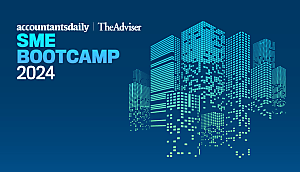The instant asset write-off scheme was the most popular measure in last year’s budget but small businesses say the government needs to do more to ease costs this year, according to a recent survey.
Around one in three small and medium businesses surveyed by accounting software company MYOB said they used the $20,000 tax break, making it the most used small business relief measure.
But 52 per cent said further support was needed to boost cash flow after the cost-of-living crisis reduced demand from consumers, according to the Biannual Business Monitor: Federal Budget Edition.
MYOB SME general manager Emma Fawcett said the cost of living was impacting small businesses “harder than ever”, especially compared to mid-market businesses.
“Businesses are being squeezed on two fronts; the cost of doing business is going up and their customers are spending less,” she said.
“Given the economic environment, smaller businesses are feeling the most cautious, with only 28 per cent believing the economy will improve in the year ahead, compared to 63 per cent of mid-market respondents.”
According to Treasurer Jim Chalmers, the instant asset write-off scheme would be extended for another year, allowing around 4 million small businesses with an annual turnover under $10 million to claim a $20,000 tax break.
Given the scheme’s popularity, tax experts have pushed for a permanent threshold to increase certainty for small businesses and their accountants.
Meanwhile, MYOB said other small business relief measures proved less popular. Out of 1,047 SMEs surveyed by MYOB between March and April, only 8 per cent used the ATO’s lodgment penalty amnesty and 12 per cent used the energy incentive.
One-third of respondents also wanted less red tape and 37 per cent wanted the corporate tax rate lowered.
On the other hand, businesses in the mid-market were more concerned with operational support, with 37 per cent of 516 respondents wanting investment in environmental protection policies and national security measures.
However, both cohorts reported experiencing business pressures related to living costs, such as fuel prices (41 per cent of SMEs and 49 per cent of mid-market respondents), cost of utilities (38 per cent of SMEs and 43 per cent of mid-market) and interest rates (30 per cent of SMEs and 43 per cent of mid-market).
“SMEs and the mid-market play an essential role in building a strong national economy, together contributing more than half of Australia’s gross domestic product,” Fawcett said.
“Ensuring these businesses are in the best position to navigate the current climate and strive for growth in the coming years is vital to a healthy trajectory for the national economy.”

 Login
Login







